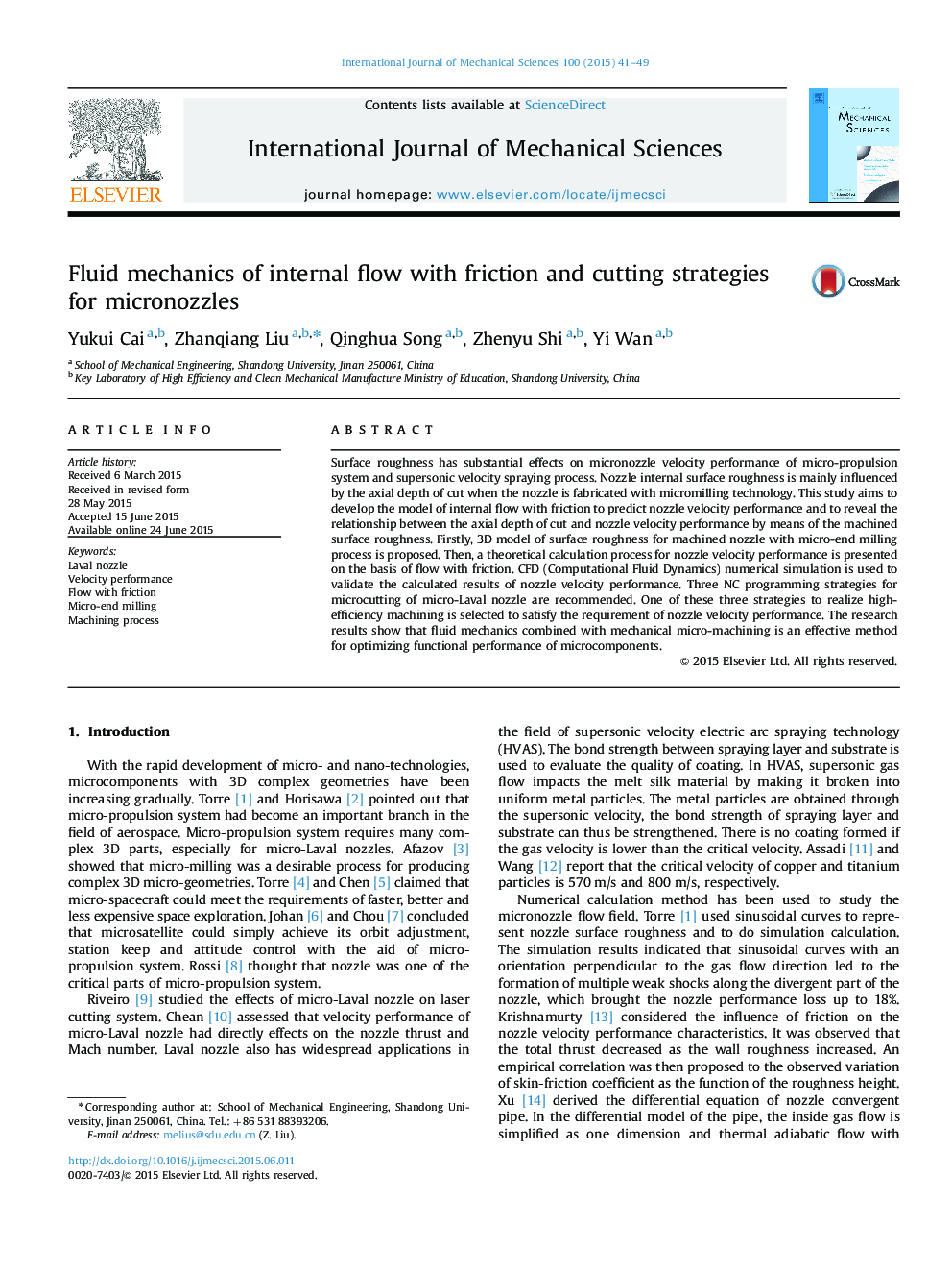| Article ID | Journal | Published Year | Pages | File Type |
|---|---|---|---|---|
| 780054 | International Journal of Mechanical Sciences | 2015 | 9 Pages |
•Internal flow with friction is modeled to predict nozzle velocity performance.•3D roughness model based on machining residual is proposed.•The research focuses on optimizing functional performance of micronozzle.•Machined micronozzle has qualified performance with optimized cutting parameters.
Surface roughness has substantial effects on micronozzle velocity performance of micro-propulsion system and supersonic velocity spraying process. Nozzle internal surface roughness is mainly influenced by the axial depth of cut when the nozzle is fabricated with micromilling technology. This study aims to develop the model of internal flow with friction to predict nozzle velocity performance and to reveal the relationship between the axial depth of cut and nozzle velocity performance by means of the machined surface roughness. Firstly, 3D model of surface roughness for machined nozzle with micro-end milling process is proposed. Then, a theoretical calculation process for nozzle velocity performance is presented on the basis of flow with friction. CFD (Computational Fluid Dynamics) numerical simulation is used to validate the calculated results of nozzle velocity performance. Three NC programming strategies for microcutting of micro-Laval nozzle are recommended. One of these three strategies to realize high-efficiency machining is selected to satisfy the requirement of nozzle velocity performance. The research results show that fluid mechanics combined with mechanical micro-machining is an effective method for optimizing functional performance of microcomponents.
